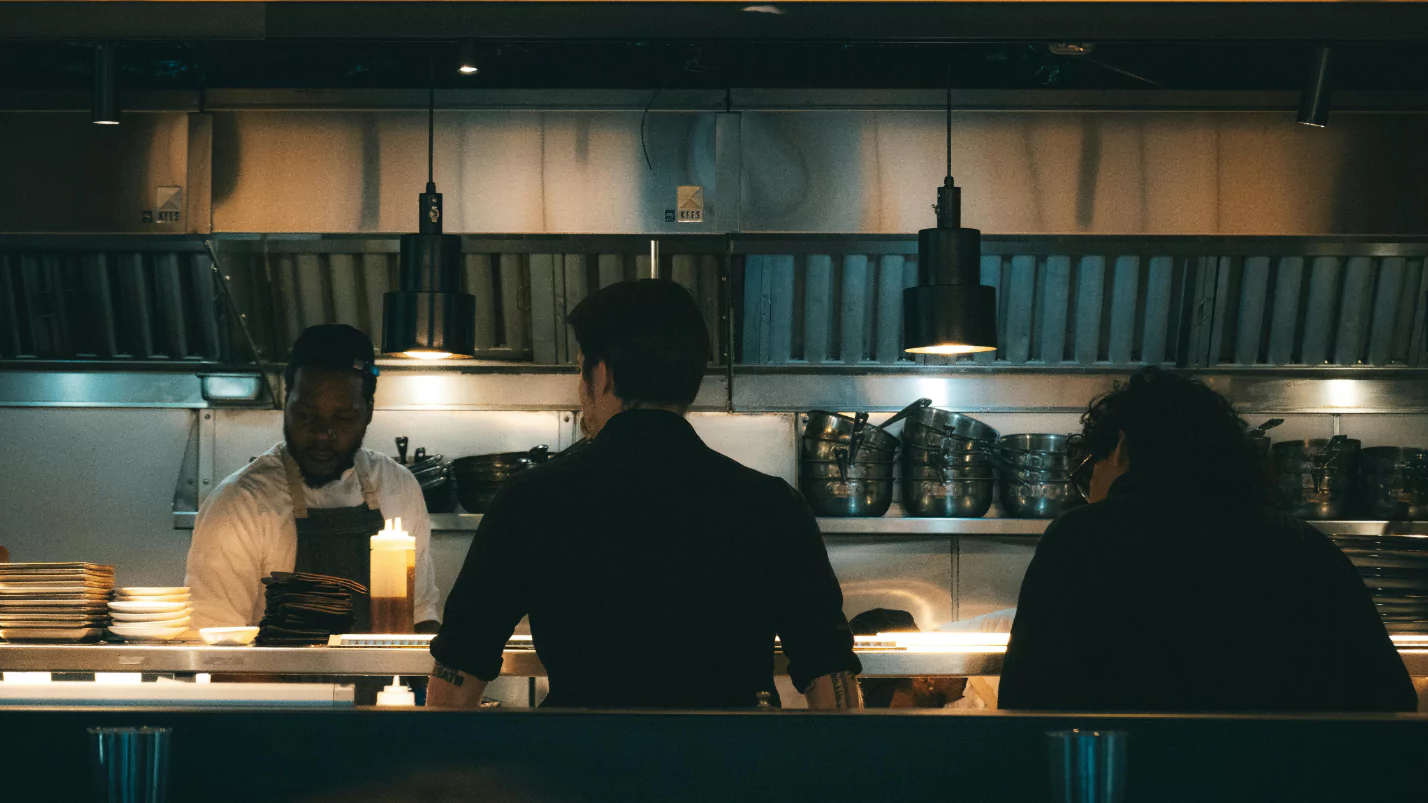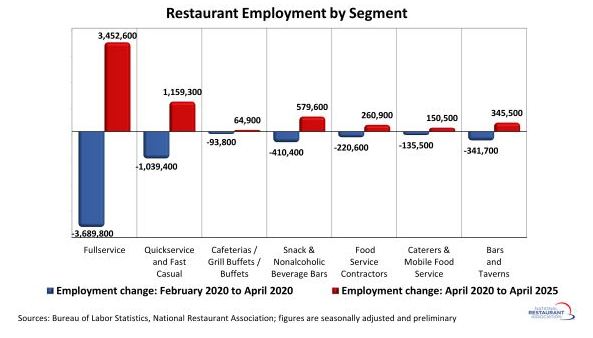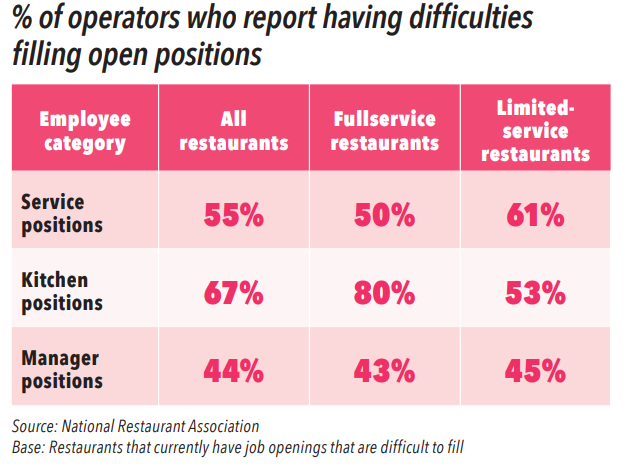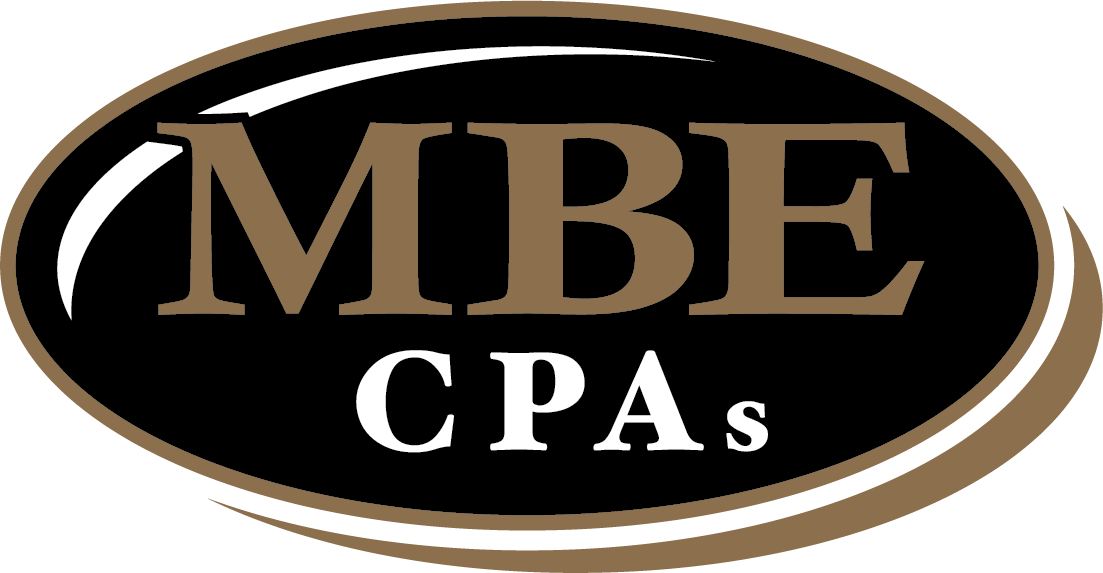The Growing Labor Gap in Franchises

Authored by: Kim Wegner — Partner, CPA, CVA, CGMA | Date Published: July 8, 2025
Three “Now Hiring” signs, five no-shows this week, and another manager just quit via text message. Sound like your franchise? The staff crisis hitting 75% of restaurant owners isn’t just about finding bodies; it’s about finding solutions that actually work.
Working closely with franchise owners at MBE CPAs, we’ve witnessed the sleepless nights, the constant scrambling to cover shifts, and the frustration of investing in someone only to watch them walk out the door two weeks later. You’re not alone in this struggle, and more importantly, there are proven strategies that successful franchisees use to break free from the endless hiring cycle.
Featured Topics:
- Why Can’t Restaurant Franchises Find Good Staff?
- Are Traditional Hiring Methods Dead for Franchisees?
- What’s the Real Cost of High Employee Turnover?
- How Are 65% of Restaurants Using Technology Solutions?
- What Quick Wins Can You Implement This Week?
- The Technology Investment That Pays for Itself
- The Financial Reality Check
- Your Next Steps
Why Can't Restaurant Franchises Find Good Staff?
- Brand Standard Constraints: Your corporate office sets wage guidelines, uniform requirements, and operational procedures that may not align with local market conditions.
- Competition with Corporate Locations: Company-owned stores often have different compensation structures and resources for recruitment.
- Limited Hiring Flexibility: Franchise agreements may restrict your ability to implement creative hiring incentives or unique benefits packages.
- Profit Margin Pressure: Franchise fees and royalties reduce your available budget for competitive wages and retention programs.

Are Traditional Hiring Methods Dead for Franchisees?
Walk into most franchise locations, and you’ll still see the same tired approaches to hiring that stopped working years ago:
- “Help Wanted” signs that blend into the background noise.
- Job postings that read like legal documents instead of invitations to join a team.
- Interview processes that focus more on availability than cultural fit.
- Onboarding programs that consist of shadowing another overwhelmed employee.
Modern candidates want to understand what makes your specific location different from the corporate chain down the street, how working for a franchise owner differs from working for a faceless corporation, and what real advancement opportunities exist within your operation.
Consider Sarah, a franchise owner in Ohio who struggled with constant turnover until she revolutionized her approach. Instead of posting generic job descriptions, she created short video tours of her restaurant, introduced potential hires to current team members, and highlighted growth opportunities available within her franchise system. The result? Her time-to-fill positions dropped from 3-4 weeks to 10 days, and her 90-day retention rate improved by 40%.

What's the Real Cost of High Employee Turnover?
Most franchise owners focus on the apparent costs of turnover – recruiting, interviewing, and training new hires. However, the hidden costs often far outweigh these visible expenses and can significantly impact your bottom line.
Direct Costs Per Employee Departure
- Recruitment expenses: Job board postings, background checks, drug testing ($300-500)
- Training costs: New hire wages during the unproductive training period ($800-1,200)
- Management time: Hours spent interviewing, onboarding, and supervising new staff ($400-600)
- Uniform and equipment replacement: Name tags, shirts, safety equipment ($100-200)
Total direct cost per departure: $1,600-2,500
Hidden Costs That Kill Profitability
- Reduced productivity: New employees work 40-60% slower than experienced staff for their first 30-60 days.
- Customer service impact: Inexperienced staff create longer wait times, order errors, and dissatisfied customers.
- Team morale: Constant turnover creates stress and burnout among remaining employees.
- Manager burnout: Your managers spend more time training and less time developing systems and improving operations.
For a typical franchise with 25 employees experiencing 75% annual turnover, you’re looking at $75,000-122,000 in total annual impact, representing 3-5% of gross revenue that could fund competitive wages or retention programs.
How Are 65% of Restaurants Using Technology Solutions?
The franchise owners winning the staffing game aren’t just throwing money at the problem—they’re using technology to work smarter. In 2024, 65% of restaurants adopted new technology to address labor challenges, while 27% still rely on manual scheduling, according to the 7shifts Restaurant Workforce Report.
Smart Scheduling Technology
Modern scheduling platforms help franchise owners:
- Reduce no-shows through automated reminders and easy shift-swapping
- Improve work-life balance with mobile schedule access
- Cut payroll costs through accurate labor forecasting
- Increase fairness with transparent scheduling rules
Recruitment and Onboarding Tools
- Mobile-first applications for convenient candidate access
- Video interviewing for efficient screening
- Digital onboarding with pre-shift training modules
- Performance tracking to identify potential issues early
What Quick Wins Can You Implement This Week?
1. Revise Your Job Postings (Time: 2 hours)
Transform generic corporate job descriptions into compelling invitations:
- Before: “Seeking energetic team members for jobs in the service industry.”
- After: “Join our family-owned franchise team where we promote from within – 3 of our current managers started as servers!”
2. Create a Referral Program (Time: 30 minutes)
Offer existing employees $200-300 for successful referrals who stay for 90 days. Referrals typically have 25% better retention rates.
3. Implement Stay Interviews (Time: 15 minutes per employee monthly)
Instead of exit interviews, conduct monthly “stay interviews” with your best performers:
- What do you enjoy most about working here?
- What would make your job easier or more enjoyable?
- What might cause you to consider leaving?
4. Establish Clear Career Paths (Time: 1 hour)
Create visual progression charts showing timelines from server to shift leader, required skills for advancement, associated wage increases, and success stories of current employees who’ve advanced.
5. Start Recognition Programs (Time: Ongoing, 5 minutes daily)
- Employee of the month with reserved parking spot
- Shout-outs on social media for exceptional service
- Small gift cards for going above and beyond
- Team celebrations for achieving goals
Explore MBE’s proactive guide to business continuity planning to align your hiring, retention, and team development strategies with the future stability of your franchise.
The Technology Investment That Pays for Itself
While manual processes might seem cost-effective, they cost you money daily. Consider the math:
Manual scheduling typically requires 3-5 hours weekly of manager time at $20-25/hour = $3,120-6,500 annually.
Automated scheduling costs $3-5 per employee monthly = $900-1,500 annually for a 25-person team.
The technology pays for itself through reduced manager time, and the additional benefits – reduced no-shows, improved employee satisfaction, and better work-life balance – deliver ongoing returns through improved retention.
Similarly, digital onboarding systems cost $20-40 per new hire but save 5-8 hours of manager time per new employee. With typical franchise turnover, this represents thousands in annual savings.
The Financial Reality Check
NetSuite Oracle reports that industry sales projected to reach $1.5 trillion and employment is expected to grow by 200,000 jobs to 15.9 million. This will make operators face challenges in recruitment, labor costs, and food price inflation. For franchise owners, this means you’re competing in a market where:
- Labor costs continue rising faster than menu prices
- Good employees have more choices than ever
- Customer expectations for service quality remain high
- Profit margins face pressure from multiple directions
The franchise owners who thrive in this environment understand that purposeful workforce investments aren’t expenses – they’re profit centers. Every dollar spent on retention saves $3-5 in turnover costs. Every technological tool that improves operations creates capacity for revenue growth.
Your Next Steps
The staffing crisis demands a strategic response. Transform your franchise from a revolving door into a destination workplace by starting with quick wins, then investing in long-term technology and systematic teamwork approaches.
Every improvement in hiring and retention creates a competitive advantage. Investing in your workforce builds a sustainable business model that weathers economic challenges and capitalizes on growth opportunities.
Successful franchise owners treat their team as their most valuable asset, not a commodity. Plus, significant tax advantages are available to franchisees who invest strategically in their workforce. Benefits most owners overlook.
At MBE CPAs, we help franchise owners build profitable, sustainable operations through specialized restaurant payroll management and strategic tax planning. See how we can help you today.
